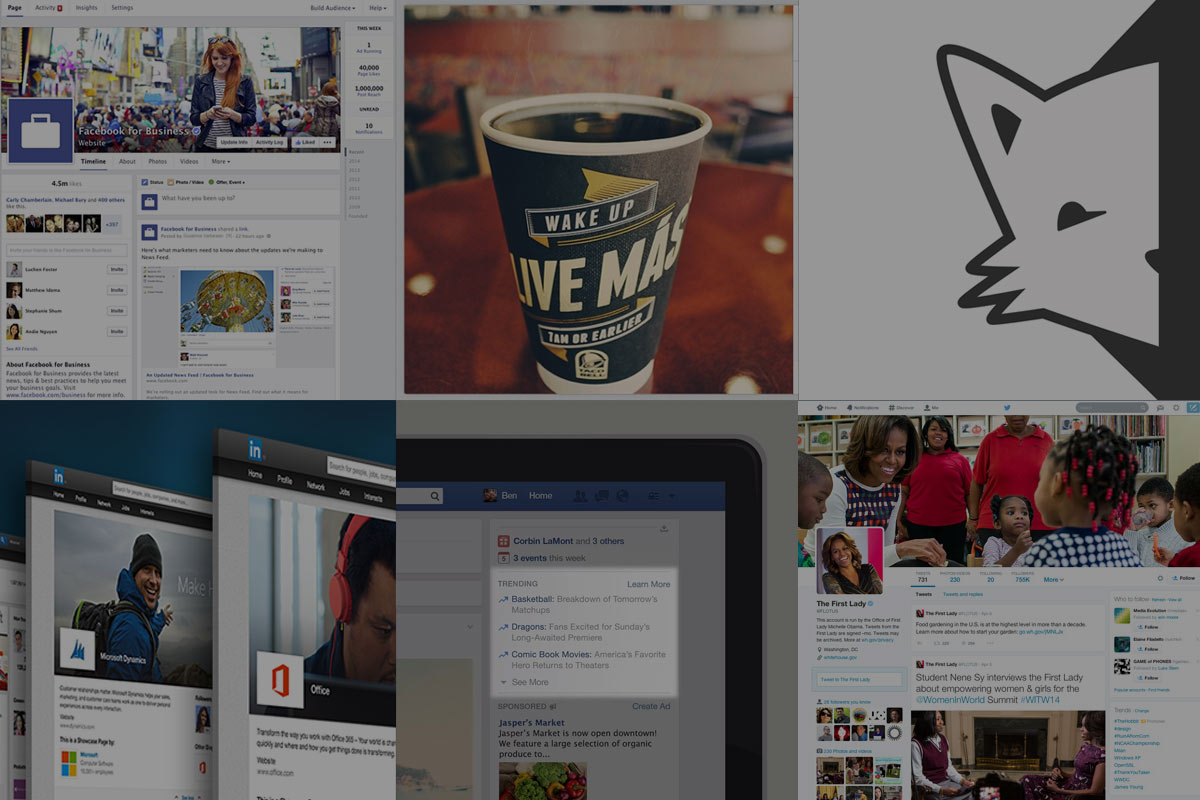Six Social Media and Digital Changes to Be Aware Of In April 2014
Life moves pretty fast…
Ferris Bueller didn’t know the half of it. Lately, it seems like changes to the social media and digital landscape are occurring daily. Here’s a rundown of six major changes that have come about in the last few weeks.
LinkedIn’s Products & Services Pages are out. Showcase Pages are in.
LinkedIn’s Products & Services Pages allowed you to list your brand’s offerings or share links to valuable resources like white papers, guides and case studies. The listings were a great opportunity for SEO, with keyword-rich content and links back to your website or landing pages.
The new Showcase Pages work more like sub-pages for your main LinkedIn Company Page. While you still have the opportunity to link out to your site and include a description (albeit a short one – under 200 characters), the emphasis is on sharing company updates, much like you would on your main page or other social networks. Users can follow your company’s main page or just the sub-page.
Atomicdust has started to play around with the Showcase Pages by adding a Social Media and Content Marketing Showcase Page. Check it out here.
Facebook Pages get a new layout – again.
Facebook recently debuted a new look for Facebook Pages, and while the layout itself isn’t a big change for users, Page administrators may be in for a shock.
The Admin Panel has been replaced with new options across the top of the page. Some important changes include renaming “Notifications” to “Activity,” and moving the “Activity Log” – where you’d normally view scheduled posts – to an option within the Page settings.
Another big change that will impact many brands is the diminished presence of landing pages (also referred to as “apps” or “tabs”). Once featured prominently – they’ve moved around constantly, from under the profile picture, to a “photo strip” across the top of the page, to customizable boxes under the Cover Photo – the pages are now listed in a “More” dropdown menu. With each move, views for these pages have decreased, and we suspect this move will be no different. It’s obvious that Facebook is putting more emphasis on frequently shared Timeline updates.
Facebook tells users what’s trending.
Another new Facebook feature to keep an eye on is the “Trending” sidebar. Unlike Twitter’s Trending Topics – which are often discernible hashtags or sponsored topics – Facebook’s Trending Topics seem actually….useful. (Shocking, right?)
The topic is listed along with a short recap explaining why it’s newsworthy. Clicking on the topic takes you to posts from friends, news sources and popular websites’ discussions of the story.
The “Trending” sidebar is a great place for social media marketing managers to see what’s trending online daily. It also provides yet another space where content creators can strive to be featured.
Instagram Ads are back.
While Instagram Ads aren’t exactly new – they first launched late last year – they’ve had a resurgence of sorts with the debut of Taco Bell’s breakfast menu. Taco Bell is one of a handful of advertisers who have used the photo-sharing network as an advertising platform. Others include GE, Michael Kors, Lexus and Ben & Jerry’s.
While Instagram Ads could potentially show increased awareness (through likes, comments and new followers), it’s hard to make direct claims to ROI without linkable text in photo descriptions or in the photo itself.
And beginners need not apply – Instagram Ad budgets are rumored to range anywhere from $350,000 to $1 million depending on desired reach and frequency.
Twitter’s redesign puts an emphasis on visual content.
Twitter has started rolling out a new profile layout featuring a larger profile photo and a header image – similar to what we’re used to seeing on Facebook and Google Plus.
Other new features include pinned tweets, a larger display for popular tweets and the ability to filter a user’s tweets to show only posts with photos and videos or only posts with replies. It’s unclear whether features like these will be available through third-party applications like TweetDeck or Hootsuite.
Twitter has also stepped up their photo-sharing game, allowing users to upload up to four photos in one link (a feature available only on iOs) and added tagging functionality to photos. This emphasis on visual content can’t be ignored. If your brand doesn’t have access to visual content, you need to start thinking of ways to add it to your content strategy.
Apps like Secret, Whisper and Erodr are gaining popularity.
It all started with Snapchat. Now a new batch of anonymous and/or self-destructing-message-based social networks are gaining popularity among younger demographics. Apps like Secret, Whisper and Erodr allow users to share content without worrying about permanency. Some argue interactions on these networks better mimic real life, as users are less worried about protecting their digital footprint or “personal brands.”
Only time will tell how – of even if – brands can leverage these networks, but it’s definitely a trend to keep an eye on.

